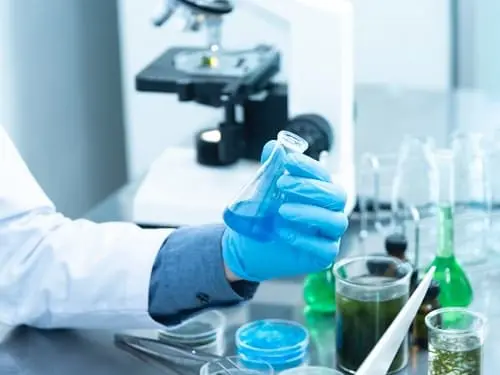According to German-startup ‘Bluu Seafood’, its range of cultivated seafood is a way to protect oceans and animals as well as ensuring a high-quality, sustainable supply of nutritious food.
What Is ‘Cultivated Seafood’ ?
Cultivated seafood, also known as cultured seafood or lab-grown seafood, refers to seafood products that are produced using cellular agriculture techniques in the lab. Instead of being harvested from the wild or raised in traditional aquaculture systems, cultivated seafood is created by culturing cells taken from the tissues of aquatic animals (fish cells). The Bluu Seafood’s process, for example, involves fermenting the fish cells with natural ingredients to produce a ‘cell mass’ that can then be shaped to resemble popular seafood products like fish fingers, fillets of fish, and sashimi (the fish part of sushi).
How Do They Get The Fish Cells?
The Germany based startup Bluu Seafood (formerly Bluu Biosciences) uses stem cells from a fish sample. These are used to establish fish cell lines that are grown in suspension (without the use of microcarriers or other scaffolds) in small aggregates of cells called spheroids. The spheroids cells adhere to each other and grow while being stirred in a bioreactor. The resulting cell mass has additional natural materials added to it to improve complexity and positively influence the taste, texture, and colour of the final product.
The Benefits
The benefits of producing cultivated seafood compared to catching fish are many, including:
- No further destruction of the oceans, and no mass killing of animals. For example, more than 90 per cent of wild fisheries are now classified as overfished or harvested at maximum capacity.
- It’s more resource efficient, plus location-independent production is possible.
- It may provide a safer, super healthy, GMO-free alternative that has 100 per cent traceable ingredients.
- Unlike many fish, cultivated seafood is not threatened by contamination, e.g. heavy metals and microplastics.
- A consistent premium quality of the product can be achieved, while taste can be adapted to local preferences.
- Producing cultivated seafood is sustainable. There is no damage to the environment or the seabed from fishing boats and there are no carbon emissions from refrigeration, transporting, and other necessary stages in dealing with perishable fresh fish.
Funding
So far, since its foundation in 2020, the startup Bluu Seafood has raised more than EUR 23 million (USD 25 million) and raised EUR 16 million (USD 17 million) in its Series A funding round. Its CEO and Co-Founder Sebastian Rakers said: “Our successful Series-A demonstrates the enormous potential that lies in cultivated fish as a platform technology for sustainable animal protein and underlines the strong scientific development that we at BLUU Seafood have delivered so far.”
Starting In Singapore, cultivated fish and meat does not yet have regulatory approval in many countries so Bluu Seafood is aiming to enter the Singapore market in 2024, where cultivated chicken has been approved since 2020.
What Does This Mean For Your Organisation?
The livestock industry’s environmental impact – greenhouse gas emissions, deforestation, water pollution, and other environmental problems, animal cruelty, public health concerns, the need for sustainable and scalable food sources – led to the production of cultivated meat, which raised a few eyebrows to begin with but is already approved in Singapore. It makes sense, therefore, that overfishing, pollution of the oceans and similar environmental and health concerns have laid the demand foundations for cultivated seafood too. The growing popularity of plant-based meat alternatives in supermarkets is a sign that food is heading in a more sustainable direction that doesn’t involve animals. Cultivated meat and fish, with the right information, marketing, and price may be the next step in this journey once regulation extends to countries other than Singapore when there will be plenty of opportunities for new and existing food brands to move into this market. Technology is now playing a greater part in food production and in finding ways to feed the world’s growing population in a sustainable way at a time when the world faces serious global-warming related challenges.


